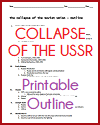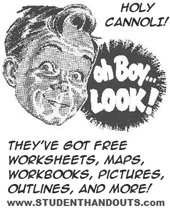Utilizing outlines and PowerPoints in the classroom can significantly support your high school World History students in understanding the collapse of communism in Europe. Outlines help break down complex developments into clear, manageable segments, such as economic stagnation, political dissent, and reform movements. They allow students to follow key events chronologically—like the rise of Solidarity in Poland, Gorbachev's reforms, the fall of the Berlin Wall, and the dissolution of the Soviet Union—while reinforcing cause-and-effect relationships.
PowerPoints enhance outlines by adding visual elements such as maps of Eastern Europe, photos of protests, images of Gorbachev and other leaders, and political cartoons. These visuals help students grasp abstract concepts like glasnost, perestroika, and democratic transition. Bullet points, quotes, and timelines help structure the content and maintain student engagement.
Together, outlines and PowerPoints cater to visual and structured learners, promote organization and clarity, and encourage active note-taking. They help students develop a well-rounded understanding of how and why communism collapsed across Europe.
|











